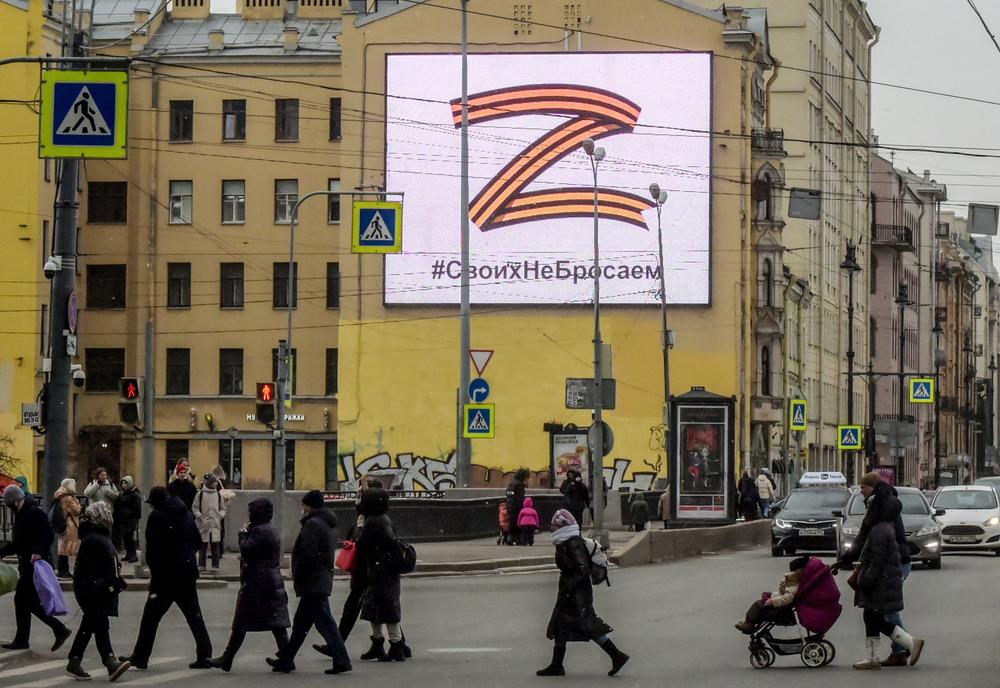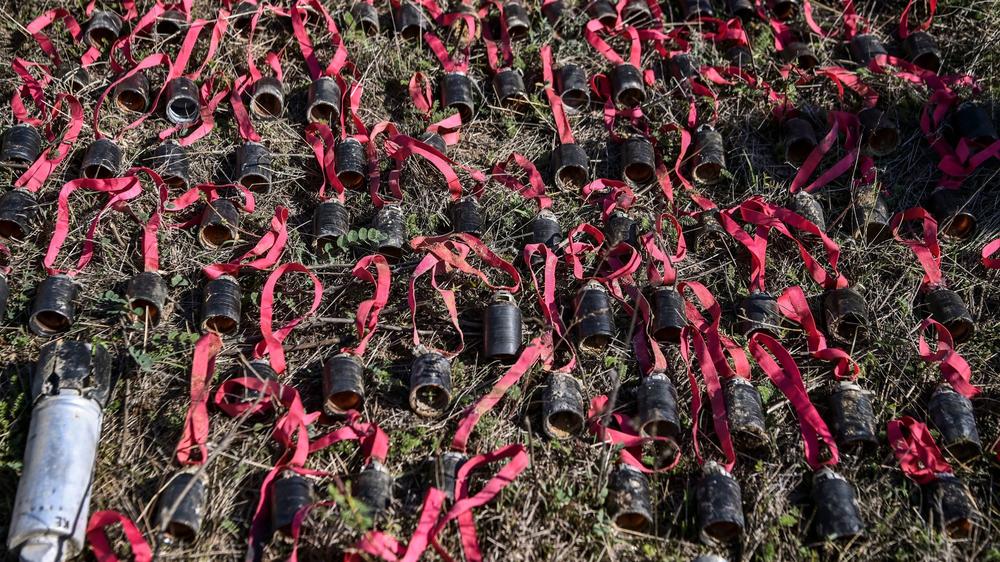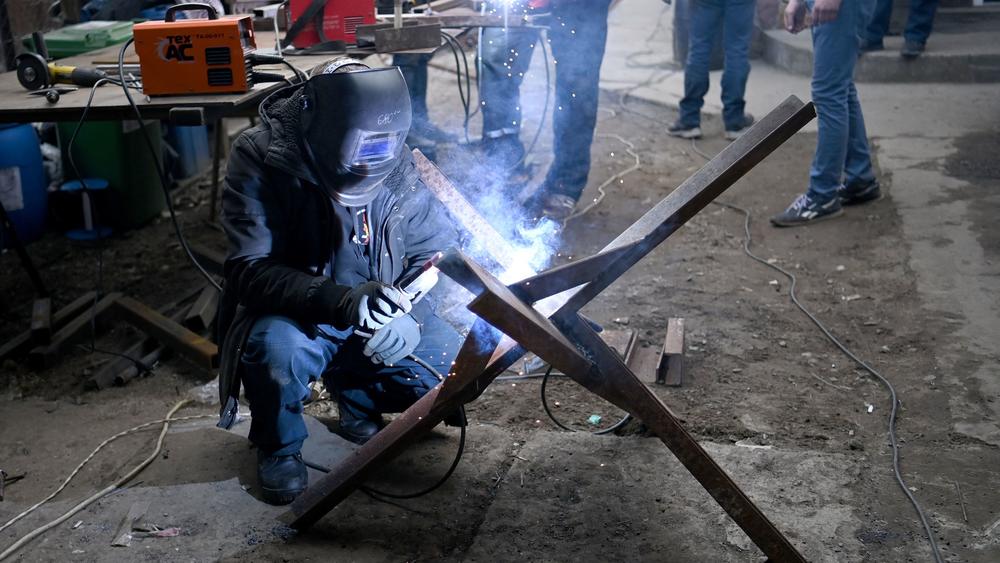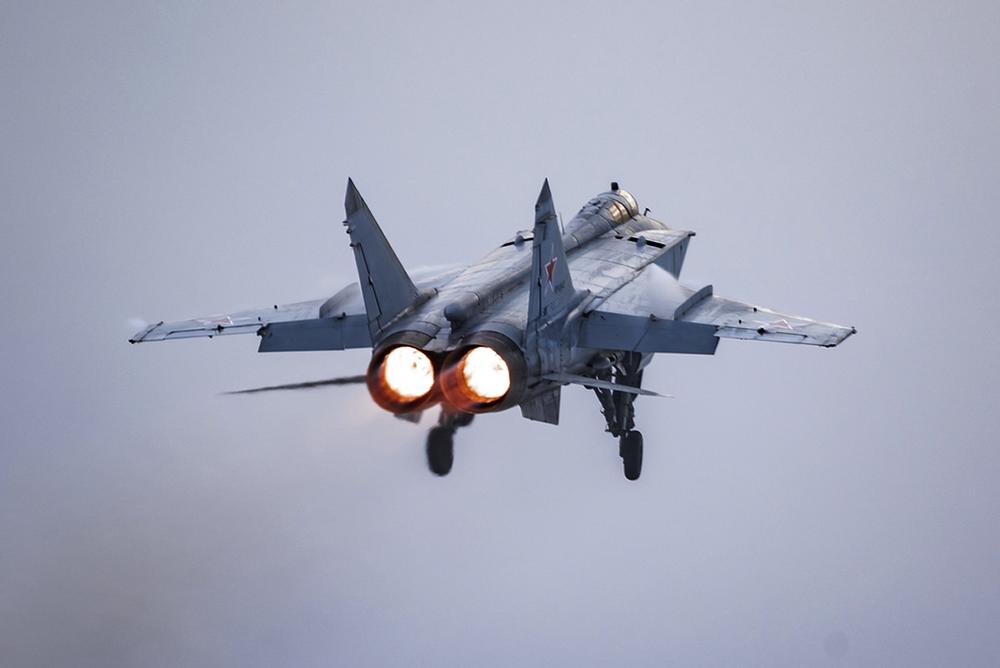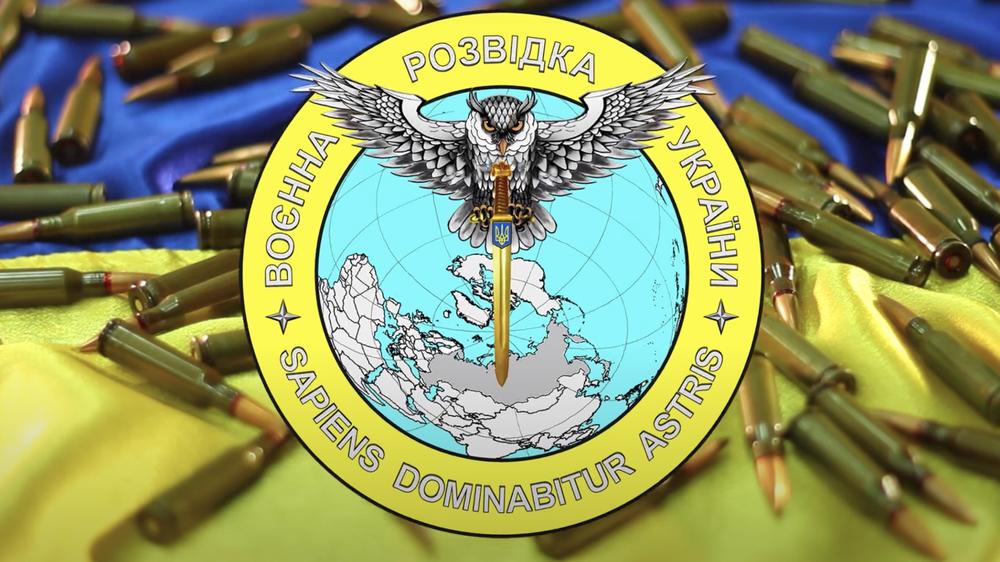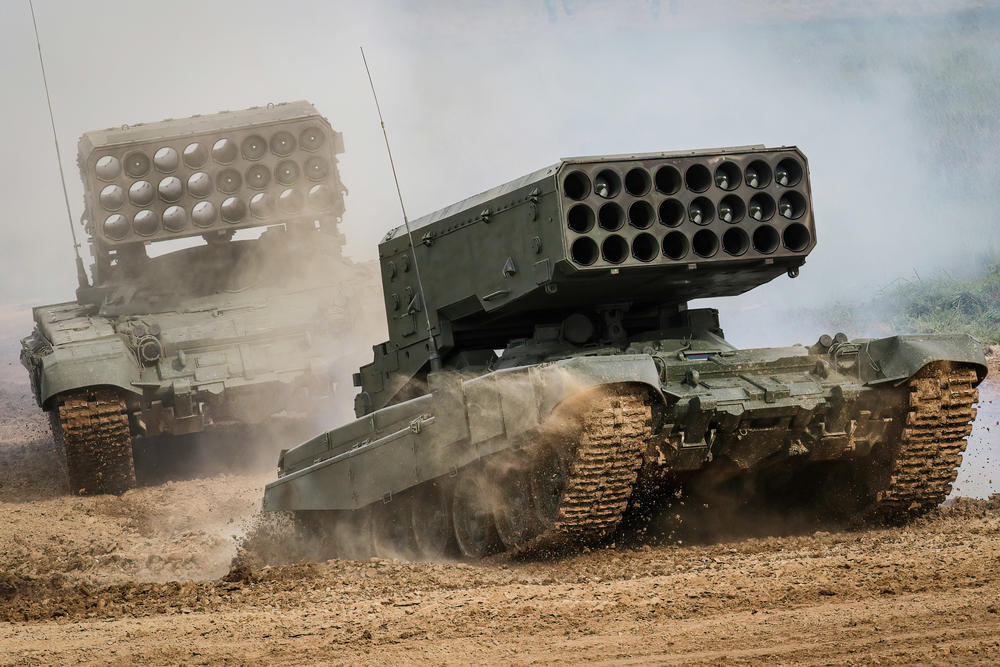Section Branding
Header Content
The war in Ukraine has reintroduced these words and phrases into our vocabulary
Primary Content
Russia's invasion of Ukraine has many of us using new words and phrases, from geopolitical terms like "rump state" to military lingo such as "MANPADS."
We're also learning to decipher slogans and spot differences between Russian and Ukrainian spellings during a conflict in which information is treated as its own battlefield.
Tracking surges in the words we use is part of linguist Grant Barrett's job. He is the co-host of A Way with Words, a public radio show about words and language, and a vice president of the American Dialect Society.
"As a word watcher, we get a sense of the worries of the world," he told NPR.
Barrett points out how the term Cold War has now been supplanted by the term "hot war" — a violent conflict with many of the worst burdens borne by civilians.
With Barrett's help, NPR created a kind of war glossary, explaining some of the terms people are using to discuss the war Russia and President Vladimir Putin are waging on Ukraine.
Appeasement
The Western world is debating whether permitting Putin to retain some of the territory he has seized would "be like the 1938 appeasement of Hitler by British Prime Minister Neville Chamberlain," Barrett said.
Some experts, noting that Russia seized Crimea in 2014, warn that Putin could be further emboldened by any accommodations.
The circumstances have led to talk of a "smell of Munich" being in the air, Barrett said, referring to the 1938 Munich Agreement that allowed Nazi Germany to annex part of Czechoslovakia — an unsuccessful attempt to prevent further fighting.
Cease-fire and the cessation of hostilities
In general, a "cessation of hostilities" is temporary and can be localized, while a cease-fire is meant to be permanent and comprehensive.
The United Nations lists at least seven terms that describe pauses in violence, many of which are aimed at allowing civilians to reach safety or access help — or, in the best cases, providing time to negotiate a lasting peace.
Cluster munitions
From the earliest days of the war, human rights groups accused Russia of using these controversial weapons, which open midair and indiscriminately spray wide areas with dozens or even hundreds of small "bomblets" — often with tragic effects, especially in urban or civilian settings.
A U.N. convention banning the use of cluster munitions took effect in 2010; but Russia, Ukraine — nor the U.S. — have agreed to that ban.
Donbas
"Donbas" comes from an abbreviation meaning "Donets coal basin," Barrett said. Leaders in this region of eastern Ukraine have recently favored Russian control, and it's home to Luhansk and Donetsk — the Ukrainian territories that Russia recognized as independent republics.
Finlandization
The term describes a nation that, while technically neutral and independent on the international stage, yields to the policies of a larger, more powerful neighbor, as Finland deferred to the USSR during the Cold War in return for maintaining its sovereignty.
In the weeks before the war, the term made occasional headlines — in part because it's generally seen as a pejorative. It could resurface if Ukraine and Russia agree to negotiate.
Hedgehog
Also known as the Czech hedgehog, the spiky-looking steel obstacles can divert or delay tanks. Ukrainian civilians have been DIY-ing hedgehogs, welding two bars or beams at an angle to make a cross and then adding a third to ensure it holds its shape even if it's knocked over.
Humanitarian corridor
"Specific routes and logistical methods agreed upon by all relevant parties to allow the safe passage of humanitarian goods and/or people from one point to another in an area of active fighting," the United Nations said.
Javelins
The anti-tank missiles are "very, very effective" at knocking out tanks and armored vehicles, retired U.S. Army Brig. Gen. Peter Zwack told NPR. Javelins went into full-scale production in 1997.
The weapon's ability to destroy Russian armor has made it a cultural phenomenon in Ukraine, where it even has its own meme: St. Javelin.
The Javelin name has also been used for a U.K.-made surface-to-air missile.
Koloradi
A derisive Ukrainian nickname for pro-Russian separatists, many of whom wear orange-and-black St. George ribbons that symbolize Russia's military strength.
George was a Roman army officer who became a martyr because of his Christian faith. The Order of St. George is among Russia's highest military honors, dating back to 1769 — after a hiatus, it was reinstated by Putin's government in 2000.
Koloradi is also the Ukrainian term for the Colorado potato beetle, an invasive, destructive pest whose stripes resemble the ribbons.
MANPADS
Man-portable air-defense systems, sometimes called MPADS, are portable surface-to-air missiles. In Ukraine, they've been seen carried by soldiers — and reportedly bringing down Russian aircraft.
There are many types of MANPADS, although the most famous is the U.S.-made Stinger.
MiG
The jet warplanes are named after the Mikoyan-Gurevich aviation company. The MiG-15 fought in the Korean War of the 1950s. Ukraine's air force uses the MiG-29 — and Poland recently threw the U.S. a curveball by announcing a plan to give Ukraine more Russian-made MiG-29s.
No to War (нет войне)
The phrase is used by Russians who are against the war in Ukraine — even under the threat of detention, arrests, steep fines and other punishments. Even children have been taken into custody for holding homemade signs.
The Kremlin's harsh response to anti-war sentiments has recalled the mass purges of Russia's Stalinist era.
No-fly zone
Ukrainian leaders have repeatedly asked their allies in Europe and the U.S. to "close the skies" over Ukraine to give their ground forces a chance against Russia's invading military. But Western nations have stopped short of calling for this measure.
"The only way to actually implement something like a no-fly zone is to send NATO planes into Ukrainian airspace and to shoot down Russian planes, and that could lead to a full-fledged war in Europe," U.S. Secretary of State Antony Blinken said. "President Biden has been clear that we are not going to get into a war with Russia."
Oligarch
"A very wealthy businessperson with strong political ties," Barrett said, adding, "wealth alone does not make one an oligarch."
"The use of 'oligarch' to refer specifically to wealthy Russians dates to the 1990s, although general use of the term dates to the 1600s," he said.
Orcs
Ukrainians have invoked the Lord of the Rings villains to refer to Russia's force, saying the hordes were being sent to loot their country and dismantle its democracy. Those using the term include a doctor in Melitopol who filmed and posted video of a protest to social media.
Owls
Ukraine's defense intelligence service features an owl in its insignia. In it, the owl hovers above a global map, stabbing a sword down from the sky into Russia. The service recently promised that its owls would track down Russian marines that Ukraine says attacked civilians.
Putin nicknames (derogatory)
Critics of Putin use a range of "blended names" for the Russian leader. Barrett cites a chapter from Language of Conflict: Discourses of the Ukrainian Crisis, published in 2020, for some examples:
- Putler: Putin + Hitler
- Kaputin: Kaput + Putin
- Haputin: Ukrainian khapaty хапати (which means "grab") + Putin
Rump state
The term refers to any nation that has seen a large portion of its territory carved away and absorbed into another country.
The Russian Federation is sometimes considered to be a rump state of the USSR. Now Putin wants to turn Ukraine into a rump state, expert Fiona Hill recently said.
Slava Ukraini!
"Glory to Ukraine!" now peppers many statements coming out of Ukraine. It's often followed by the reply, "Heroiam slava!" — glory to the heroes.
House Speaker Nancy Pelosi used the phrase in Congress as she introduced Zelenskyy ahead of his March 16 speech to U.S. lawmakers.
The phrase dates at least as far back as Ukraine's war for independence (1917-1921); it also had a resurgence when Ukraine left the Soviet Union in 1991.
Special military operation
Putin's term for his country's attack on Ukraine is, at best, a euphemism and, at worst, a sign of the gap between the reality of what is taking place in Ukraine and the narrative many Russian people are being fed. While the rest of the world sees a tragic humanitarian crisis, the Kremlin has insisted it is on a peacekeeping effort in Ukraine.
Switchblade drone
The drone is small enough for one person to carry — and its twin sets of wings spring out when it's launched from a tube, hence its name. There are at least two models of the drone, which its maker calls a "loitering missile." While the smallest version weighs only 5.5 pounds and is used for relatively short flights, bigger models can carry an anti-armor warhead, reach up to 115 mph and stay in the sky for more than 40 minutes.
The new U.S. aid package for Ukraine reportedly includes 100 of the drones.
SWIFT
The global bank messaging system operated by the Society for Worldwide Interbank Financial Telecommunications is a crucial part of the harsh sanctions on Russia.
Thermobaric bomb (or vacuum bomb)
Images and other evidence show that Russia has brought thermobaric weapons to Ukraine.
"These are very devastating weapons that create a gas [fuel] cloud that then explodes," Jeffrey Edmonds, a research scientist who is a former director for Russia at the National Security Council, told NPR. "These are the weapons they used to clear out Aleppo" in Syria.
Edmonds describes them as "very indiscriminate weapons that cause mass destruction." Thermobaric weapons are not explicitly banned — the U.S. has them as well — but critics question their legality.
Z
The letter, which isn't part of the Cyrillic alphabet used by both Ukraine and Russia, is now seen as a Russian pro-war symbol. It was painted on Russian tanks and other military vehicles as a large white Z. It's also often rendered in the same colors of the ribbon of St. George, orange and black.
"In the beginning, it looks like it was just simply a way for the Russians to mark their vehicles in some kind of internal classification," Barrett said. "But the Russians quickly realized that they could capitalize on it and use it as kind of a badge of honor."
Copyright 2022 NPR. To see more, visit https://www.npr.org.
